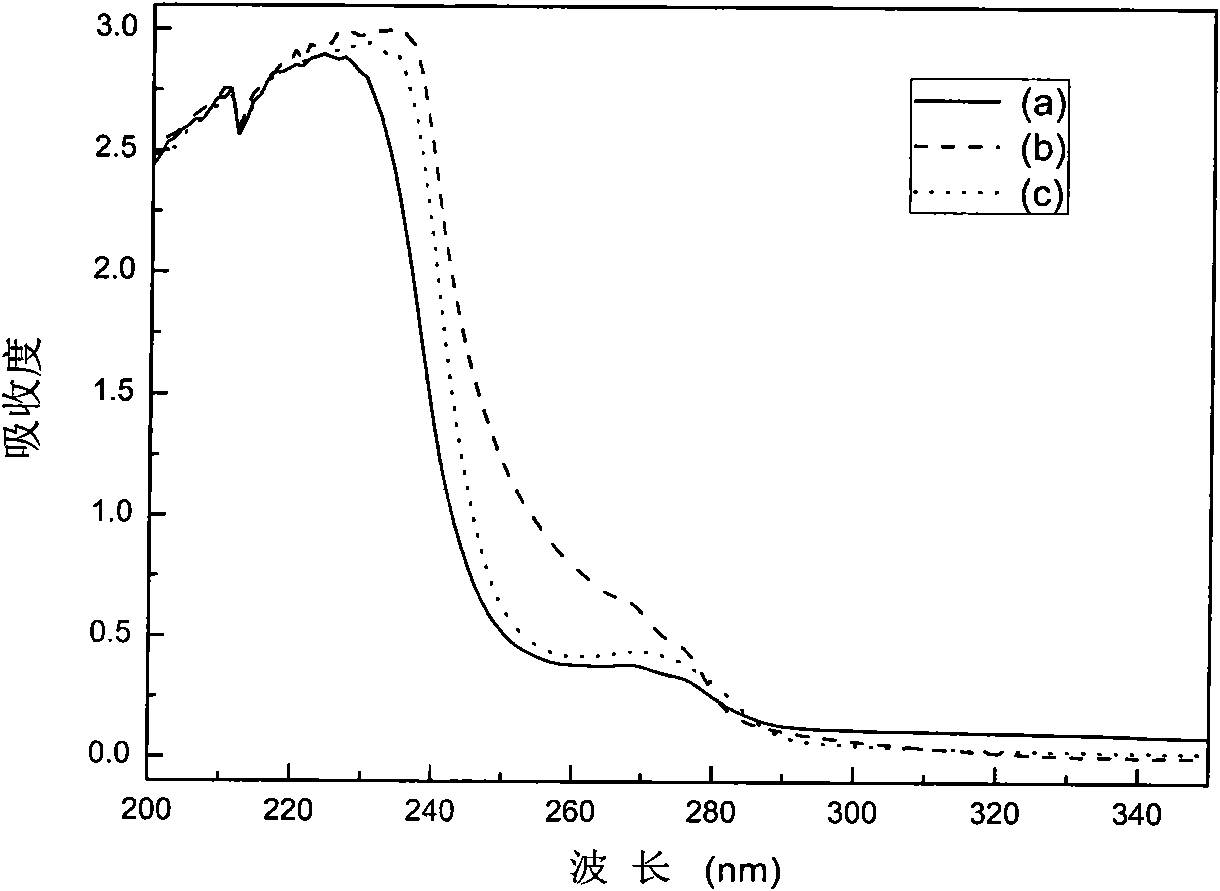Method for preparing dimer(fatty acid)yl polyester by grafting on cyclodextrin
A technology for dimerizing fatty acid and base polyester, which is applied in the field of cyclodextrin graft dimerization fatty acid base polyester and its preparation, and can solve the problems that have not been reported before.
- Summary
- Abstract
- Description
- Claims
- Application Information
AI Technical Summary
Problems solved by technology
Method used
Image
Examples
Embodiment 1
[0056] (1) Preparation of dimer fatty acid base polyester:
[0057] To 100 g of dimerized fatty acid (DFA) was added 0.3070 g of PTSA and 21.8 mL of ethylene glycol.
[0058] Start to heat the reaction mixture, condense and reflux, and stir under the protection of nitrogen. At this time, the oily reaction liquid becomes turbid, and becomes clear as the temperature rises. After the temperature reaches 160 ° C, the reaction is continued for 1 h. Stop flowing nitrogen, the reactor is airtight, open the vacuum pump to vacuumize 10min, to remove most of the moisture. Then 17.4823 g of MAH was added to the reactor.
[0059] Continue to feed nitrogen, react at 160°C for 1 hour, then vacuumize, and continue to react for 3 hours. Then take out the dimer fatty acid base polyester of orange-yellow oily liquid, obtain 99.6725g sample S 1 .
[0060] (2) Curing of dimer fatty acid-based unsaturated polyester:
[0061] The polyester sample obtained above is poured in the reactor, and th...
Embodiment 2
[0072] (1) Preparation of dimer fatty acid base polyester:
[0073] To 100 g of dimerized fatty acid (DFA) was added 0.3070 g of PTSA and 21.8 mL of ethylene glycol.
[0074] Start to heat the reaction mixture, condense and reflux, and stir under the protection of nitrogen. At this time, the oily reaction liquid becomes cloudy, and becomes clear as the temperature rises. After the temperature reaches 160 ° C, the reaction is continued for 1 h. The nitrogen flow was stopped, the reactor was sealed, and the vacuum pump was turned on to evacuate for 10 minutes to remove most of the moisture. Then 17.4823 g of MAH was added to the reactor.
[0075] Continue to feed nitrogen, react at 160°C for 1 hour, then vacuumize, and continue to react for 3 hours. Then take out the dimerized fatty acid base polyester of orange-yellow oily liquid, obtain 95.7360g sample S 2 .
[0076] (2) Curing of dimer fatty acid-based unsaturated polyester:
[0077] The polyester sample obtained above i...
Embodiment 3
[0088] (1) Preparation of dimer fatty acid base polyester:
[0089] To 100 g of dimerized fatty acid (DFA) was added 0.3070 g of PTSA and 21.8 mL of ethylene glycol.
[0090] Start to heat the reaction mixture, condense and reflux, and stir under the protection of nitrogen. At this time, the oily reaction liquid becomes turbid, and becomes clear as the temperature rises. After the temperature reaches 160 ° C, the reaction is continued for 1 h. The nitrogen flow was stopped, the reactor was sealed, and the vacuum pump was turned on to evacuate for 10 minutes to remove most of the moisture. Then 17.4823 g of MAH was added to the reactor.
[0091] Continue to feed nitrogen, react at 160°C for 1 hour, then vacuumize, and continue to react for 3 hours. Then take out the dimer fatty acid base polyester of orange-yellow oily liquid, obtain 100.5621g sample S 3 .
[0092] (2) Curing of dimer fatty acid-based unsaturated polyester:
[0093]The polyester sample obtained above is po...
PUM
| Property | Measurement | Unit |
|---|---|---|
| diameter | aaaaa | aaaaa |
Abstract
Description
Claims
Application Information
 Login to View More
Login to View More - R&D
- Intellectual Property
- Life Sciences
- Materials
- Tech Scout
- Unparalleled Data Quality
- Higher Quality Content
- 60% Fewer Hallucinations
Browse by: Latest US Patents, China's latest patents, Technical Efficacy Thesaurus, Application Domain, Technology Topic, Popular Technical Reports.
© 2025 PatSnap. All rights reserved.Legal|Privacy policy|Modern Slavery Act Transparency Statement|Sitemap|About US| Contact US: help@patsnap.com



